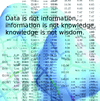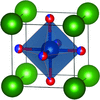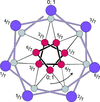issue contents
June 2017 issue

Cover illustration: Anion ordering of ATaO2N (bottom left: BaTaO2N; top right: SrTaO2N) from ideal disordered perovskite (top left) and with tilting of the octahedra in SrTaO2N (bottom right) [see Wang et al. (2017). Acta Cryst. B73, 389-398].
opinions
research papers










Anion (O/N) ordering was observed in BaTaO2N and SrTaO2N. A further Ta—O/N octahedra displacement (rotation about the c axis) distortion was observed in SrTaO2N.












 access
access



 journal menu
journal menu








































